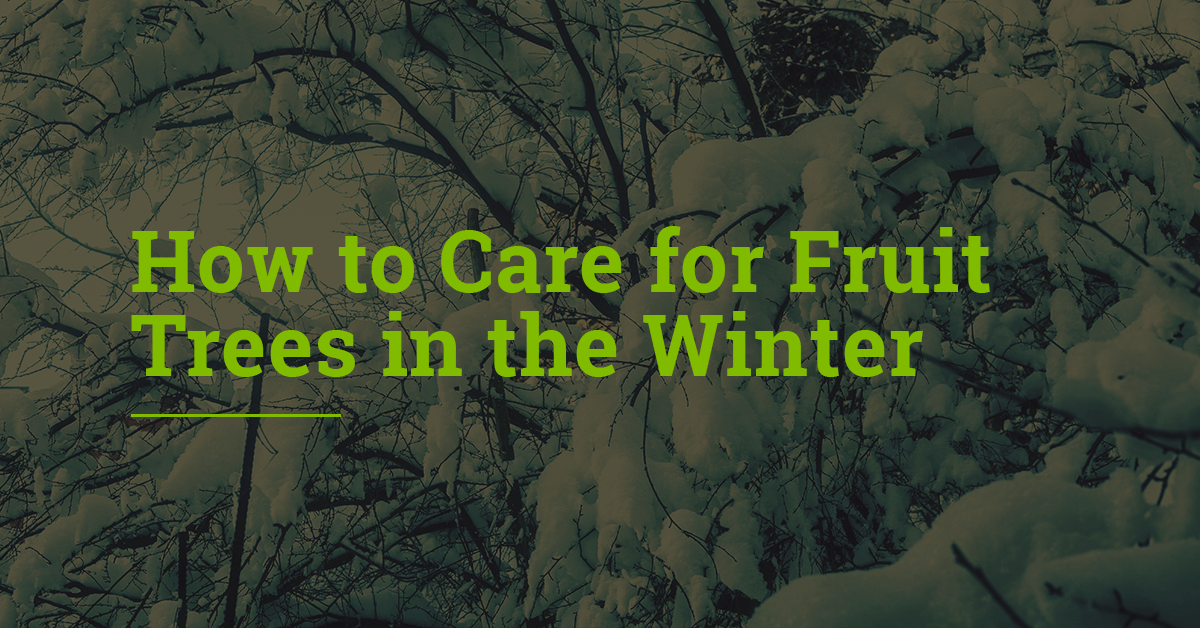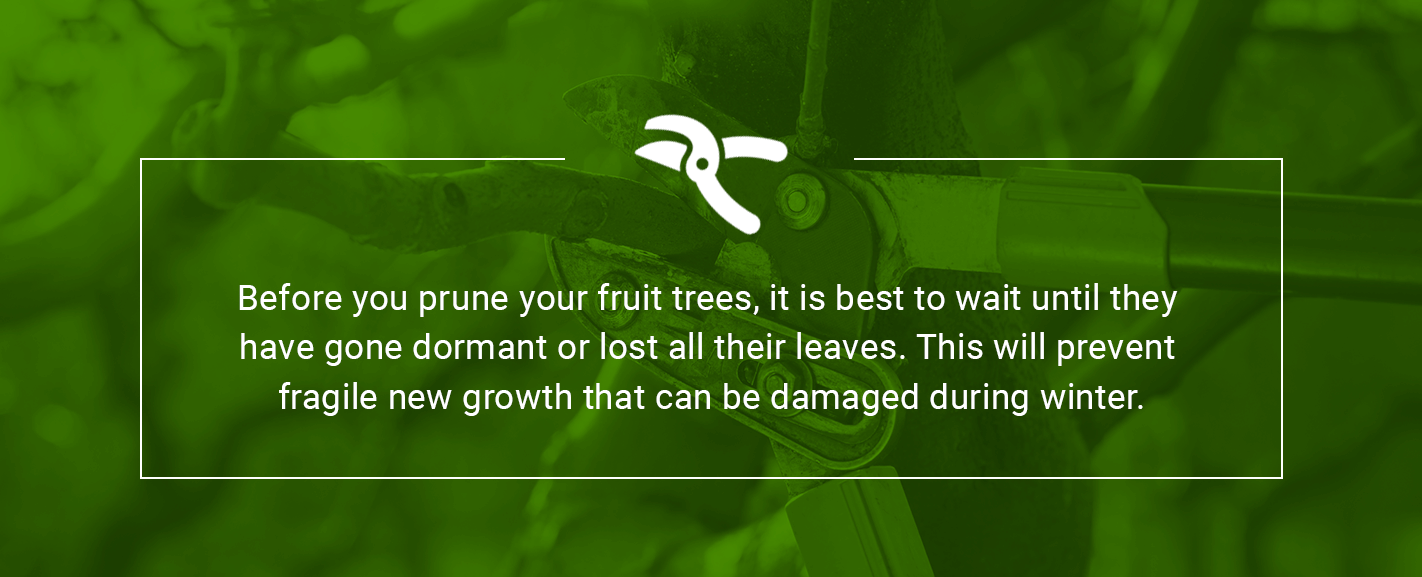

Fruit trees are beautiful additions to any yard. They add extra beauty to your property and can bear edible fruits for your family. Fruit trees can bloom wonderfully in the warmer months, giving you some delicious treats to enjoy, but they need help getting through the winter, particularly if they’re young saplings.
One of the biggest dangers of winter for fruit trees is pest infestation. Fruit tree-destroying pests can hide in and around trees during the winter and do their damage at the first opportunity. There are a few steps you can take to ward this off. Here are some simple tree care tips for fruit trees to keep those trees healthy through the cold season.
Remove Weeds
Weeding is one of the most critical steps in taking care of your fruit tree in winter. There are two reasons for this. Firstly, getting rid of weeds ensures less competition for essential resources. Second, weeds can provide cover for pests looking to use your tree for winter shelter. Removing weeds eliminates this shelter. Once you have removed the weeds, fluff up the soil to expose grubs and eggs to the surface, allowing birds and frost to take care of them.
Lay Mulch
Later in the winter, after the frost has potentially killed all the pests, a layer of mulch will slow the progress of new weeds and help nourish the tree. Mulching also protects the roots of your fruit trees from frost and freeze-thaw cycles. Ensure you add a layer of mulch a few inches thick in a donut shape around your trees. Leave around 6 inches open around the trunk of your trees to avoid bark rot.
Choose a mulch that decomposes slowly, such as composted wood chips or straw. If the mulch is too nutrient-rich, it can encourage new growth and delay dormancy.
Control Pests
Overwintering pests are a typical concern in fruit trees. Insects such as aphids can hide in the tiniest holes in your fruit trees' bark during winter to emerge in the warmer months. Preventive measures in winter can help control and eliminate the threat of these pests.
Use a plant-oil-based spray called a winter tree wash at the beginning and end of winter to reduce the number of pests in your garden. When spraying your trees, makes sure you cover every branch. Winter tree wash is natural and safe to use around pets, children and other wildlife.
You can also use glue strips or bands to prevent pests from crawling up your trees. Tie glue bands tightly around the trunk and any stakes, with the sticky side facing outward. Ensure there is no space for pests to crawl beneath the band. This method can help prevent destructive moths and other pests from laying eggs in fruit trees.
Prune and Harvest Fruit

It’s always a good idea to prune your trees. Pruning your trees in winter can help them stay healthy during the colder months. Removing dead, damaged or diseased limbs is good for overall tree health and gives new wood a better chance to grow. Pruning also makes it easier for sunlight to penetrate the tree's center.
Before you prune your fruit trees, it is best to wait until they have gone dormant or lost all their leaves. This will prevent fragile new growth that can be damaged during winter. Always use sterile clippers or pruners when pruning your trees.
Another essential step is harvesting or picking fruit, especially if it is ripe or mummified. Overripe and mummified fruit can carry diseases that can potentially re-infect your trees.
Water Deeply
Before the ground freezes, deep watering can help make roots stronger in preparation for dormancy, especially if there has been little rain. Water deeply, at least 1 to 2 inches at a time, to guarantee water reaches the roots properly. Only water early in the morning on days that are over 40 degrees Fahrenheit to avoid frost.
Prevent Salt Damage
Sodium chloride is commonly used in deicers. It can also be very damaging to trees and plants. Instead, use deicing salt made of calcium chloride or magnesium chloride. Both these salts are less harmful to plants while still being able to deice surfaces.
Wrap Young Trees
Young trees, especially if they are in their first winter, are prone to a condition called sunscald. When a tree's bark warms in the sun during the day and then cools quickly at night, it can cause the bark cells to burst. This leads to trunk cracks that can become pests’ hiding spots. Considerable sunscald can permanently damage the tree and even cause it to die. Wrapping strips of light-colored materials, such as burlap, around the trunks of young fruit trees can help lessen and even prevent sunscald.
Request Professional Tree Wintering Services From Richard’s Tree Service

Taking care of your first-year fruit trees in winter is essential to their growth. Richard’s Tree Service has ISA-licensed arborists who know how to care for trees year-round and can provide preventative care, stump removal, disease treatment and other services for your fruit trees and other yard trees. Contact Richard’s Tree Service today for a free estimate on winter tree services in Northern Virginia.
If it is an emergency please call us immediately at 703-354-3667.
Use this form to schedule a FREE estimate. After submitting your form, our team will contact you to set up this appointment.
